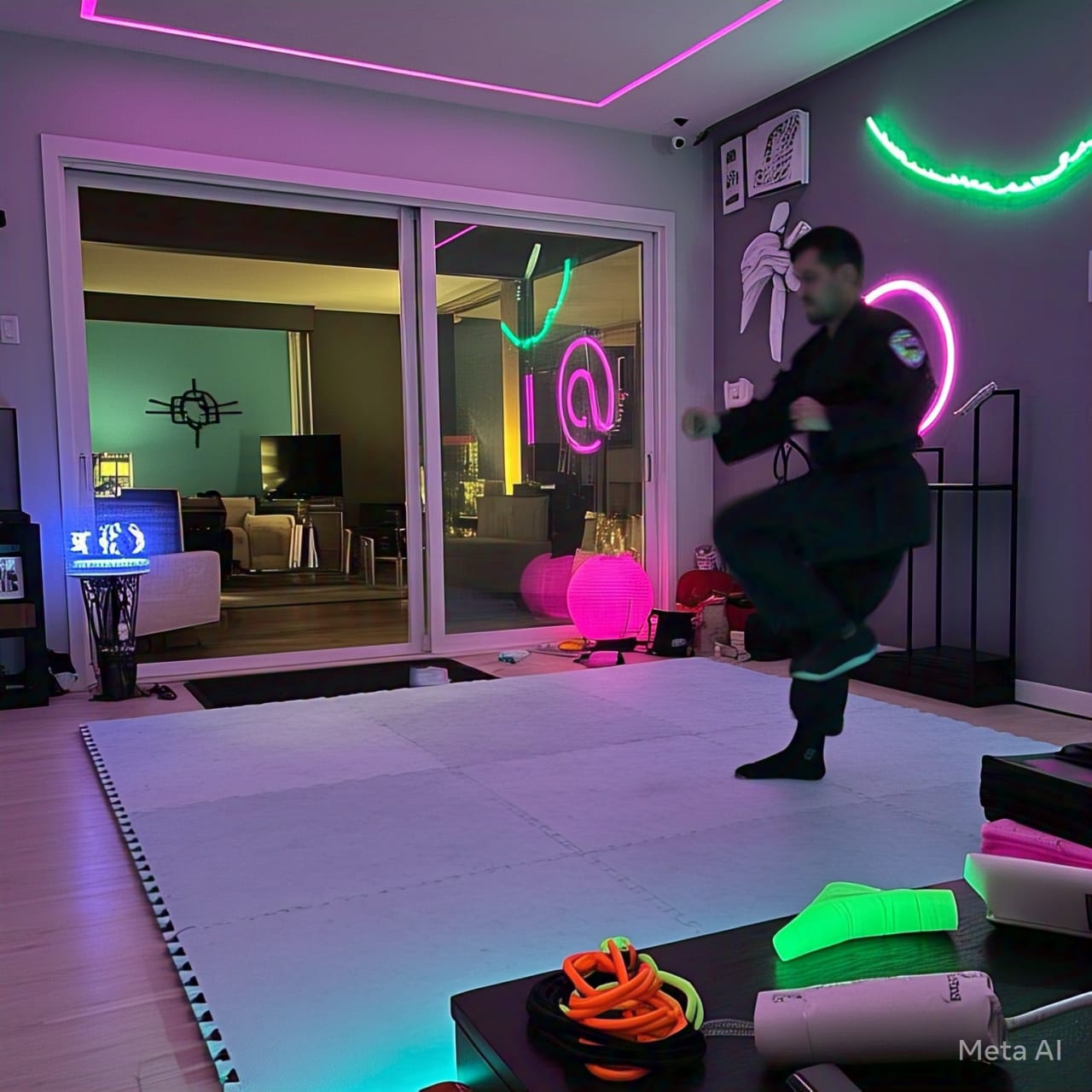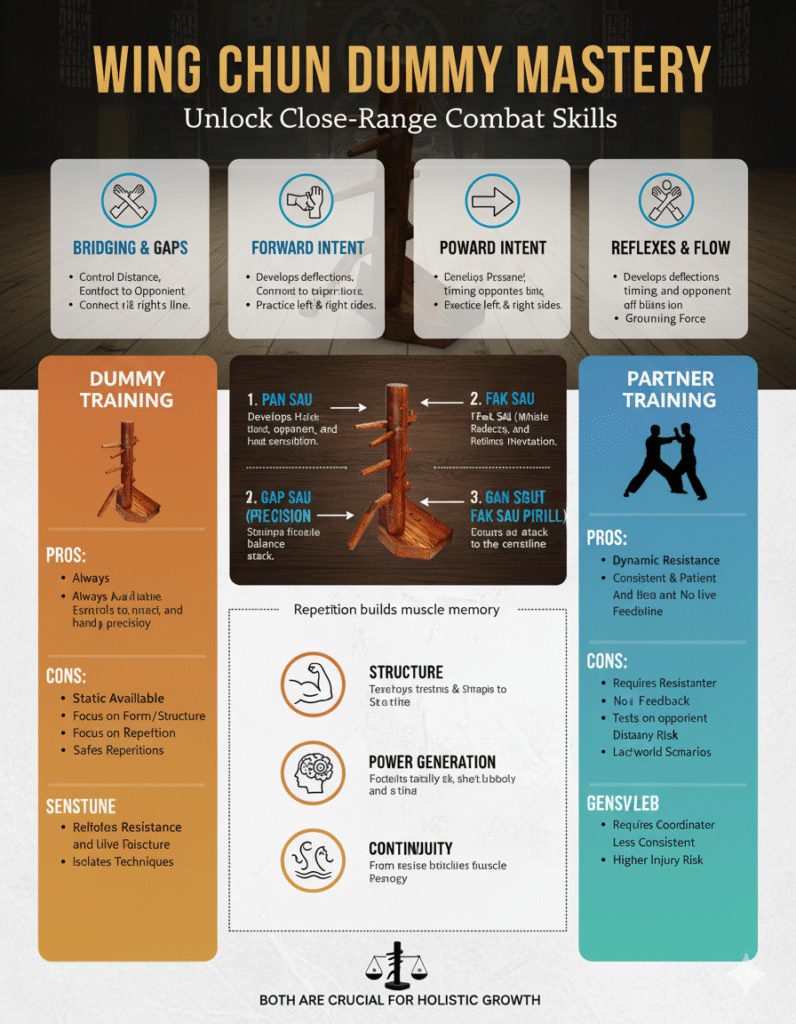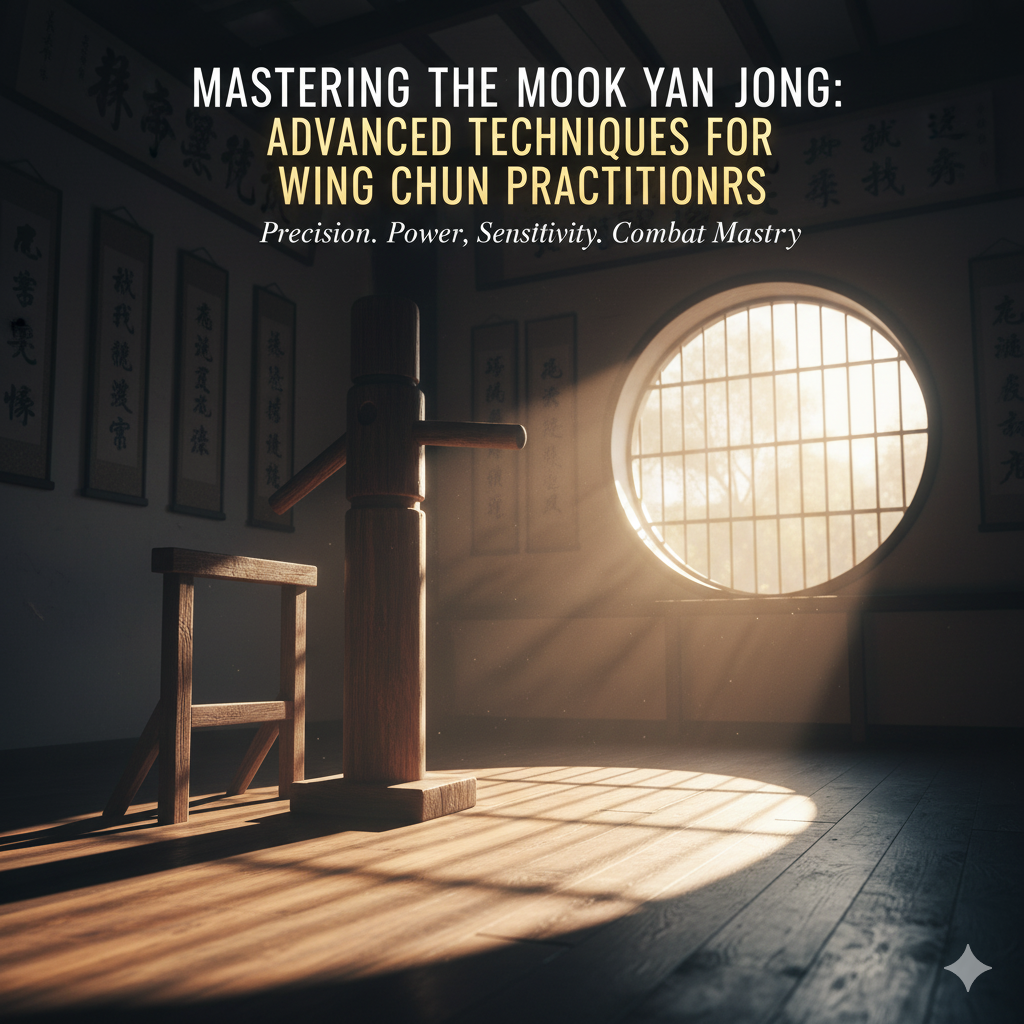Wing Chun is a dynamic martial art that has gained global recognition for its practical approach and effectiveness in self-defense applications.
Originating from Southern China, specifically in the Foshan region, Wing Chun was developed in the 17th century.
The art is believed to have been founded by Ng Mui, a Buddhist nun, who created it as a means of self-defense to help the weaker members of society, particularly women.
This foundation set the stage for a martial discipline that prioritizes efficiency and simplicity.
The core principles of Wing Chun revolve around the concepts of directness and economy of motion.
Unlike many traditional martial arts that emphasize complex movements and techniques,
Wing Chun focuses on using the practitioner’s natural body mechanics to deliver powerful strikes while minimizing unnecessary movements.
This efficiency is key to its philosophy; it empowers practitioners to defend themselves effectively, regardless of their size or strength.
Training in Wing Chun encourages the use of the opponent’s force against them, promoting an understanding of timing and distance.
Unique techniques of Wing Chun include the infamous chain punch and the use of soft energy when engaging with an opponent.
These techniques are designed to allow the practitioner to react quickly and fluidly to incoming attacks.
Moreover, Wing Chun incorporates the concept of “Sticky Hands,” or Chi Sau, which trains reflexes and improves sensitivity to an opponent’s movements.
Engaging in Wing Chun training at home can be highly effective, as it allows individuals to practice these techniques with focus and dedication.
Not only does this martial art provide a means for self-protection, but it also promotes physical fitness, mental discipline, and self-confidence.

Videos are added as random thoughts 💭 💭.
Benefits of Training Wing Chun at Home
Practicing Wing Chun at home presents multiple advantages, particularly when considering convenience.
One of the primary benefits is the ability to train at any time that suits one’s schedule.
This flexibility eliminates the need to commute to a dojo or adhere to fixed class times,
thus allowing practitioners to engage in training sessions that fit seamlessly into their daily routines.
Cost-effectiveness is another significant factor when opting to train Wing Chun at home.
Traditional martial arts classes often involve recurring fees, equipment costs, and other associated expenses.
In contrast, practicing at home requires minimal investment, often limited to instructional materials such as books and online videos.
Furthermore, home training eliminates travel costs, making it a financially sound choice for many enthusiasts.
This economic advantage can be especially beneficial for those who want to delve deeper into martial arts without the financial burden.
Training at home also encourages individuals to develop self-discipline.
When practicing in a class environment, the presence of an instructor and peers can sometimes motivate a student to push through challenges.
However, training alone necessitates a higher degree of personal commitment and accountability.
This autonomy fosters an environment where practitioners can set their own goals, leading to the creation of personalized routines tailored to individual needs and pace.
They can focus on specific Wing Chun techniques such as stances, strikes, or footwork without the immediate pressure to perform in front of others.
Additionally, solo practice allows for concentrated effort on aspects that may require more time and attention.
Such an approach can enhance technique proficiency and confidence in skills,
as practitioners can devote more time to refining their movements and mastering the fundamentals.
Overall, the benefits of training Wing Chun at home are varied and impactful,
providing a structured yet adaptable way for martial arts enthusiasts to improve their craft.
Essential Equipment for Home Training
Training in Wing Chun at home requires some essential equipment to maximize the effectiveness of your practice.
The first and foremost item is the Muk Yan Jong, or training dummy, which is specifically designed for Wing Chun practitioners.
This wooden dummy allows you to practice your strikes, angles, and footwork against a solid structure,
closely simulating real-life combat scenarios.
If purchasing a professional Muk Yan Jong is not feasible, consider constructing a☕ DIY version using sturdy materials such as wood or even using a heavy bag attached to a stable surface.
Another crucial item for home training is focus mitts.
These are useful for practicing striking techniques with a partner or even against a wall if a partner is not available.
Focus mitts enhance your speed, precision, and conditioning through targeted drills.
When selecting mitts, choose a pair that provides adequate cushioning and protection while remaining lightweight to ensure agility in both your movements and strikes.⚡
A well-organized training space is equally important to create an effective home environment for your Wing Chun practice.
Designate a specific area where you can move freely without obstacles.
Ideally, this space should be flat and have enough length for footwork drills and techniques, ensuring a safe training environment.
If space is limited, you can utilize furniture for improvisation, such as using the edge of a table to simulate the Muk Yan Jong’s structure.
Lastly, consider incorporating other functional items, such as resistance bands or weighted vests, which can enhance your physical conditioning.
Budget-friendly alternatives are also available, as many common household items can be repurposed for Wing Chun practice.
With the right equipment and a designated space, you can effectively train in Wing Chun from the comfort of your home.🤍
Remember that consistency and creativity in your training routine will yield the best results over time.
Basic Wing Chun Techniques to Practice
Practicing Wing Chun at home can be highly rewarding, especially when focusing on fundamental techniques which serve as the building blocks for advanced skills.
One of the critical aspects of Wing Chun is its stances, striking techniques, and footwork,
all of which can be practiced effectively within the confines of your home.
One foundational stance is the **”{Siu Nim Tau}”** stance. This position serves as the starting point for many techniques in Wing Chun.
In this stance, one should maintain a relaxed posture with feet shoulder-width apart.
The arms should remain close to the body, with fists positioned near the chest.
This stance aids in developing proper alignment and fluidity in movements, empowering the practitioner to transition smoothly into various strikes.
Another essential technique is the **”{Pak Sau}”**, or ‘slapping hand.’
This strike is particularly effective in redirecting an opponent’s force, allowing the practitioner to counterattack.
To perform the Pak Sau correctly, extend your hand outwards with the palm facing down while simultaneously pivoting on your lead foot.💋
Regular practice will enhance your reflexes and improve your ability to counter strikes.
Footwork is equally vital in Wing Chun. The **”{Chase Step}”**,
or forward stepping technique, enables a practitioner to move quickly into an opponent’s range while maintaining balance and readiness to strike.
Practicing this technique involves stepping forward while maintaining a low center of gravity,
which helps facilitate both offensive and defensive maneuvers.
Mastering these basic techniques is crucial, as they lay the groundwork for more advanced forms of Wing Chun.👣
Regular practice enhances coordination, timing, and accuracy, essential attributes for any martial artist.
Additionally,🦠 integrating these fundamental skills into your training regimen at home can significantly benefit your overall Wing Chun experience.
Developing a Home Training Routine
Creating an effective home training routine is essential for anyone looking to enhance their Wing Chun skills.
The first step in this process is to set realistic and achievable goals.
Goals should not only focus on mastering techniques but also encompass physical aspects such as strength, flexibility, and endurance.
By clearly defining these goals, practitioners can maintain motivation and direction throughout their training journey.🚢
Time allocation is also a crucial component of a well-rounded training routine.
It is vital to distribute training time effectively among various skills.
For instance, dedicating specific days or segments within a session to strength training can help build the necessary power for executing Wing Chun techniques.
Incorporating flexibility exercises will not only aid in improving overall performance but also reduce the risk of injury.🪙
Ideally, a training routine should include a balanced mix of technical practice, physical conditioning, and mental preparation.
Practicing techniques like stances, footwork, and drills should be integral parts of these sessions.
Another practical approach is to track progress over time.
Keeping a training journal can be immensely beneficial.
Documenting accomplishments, setbacks, and adjustments can provide insights into personal growth and areas that require additional focus.
Regular reflection on one’s training regimen ensures modifications are made based on evolving goals and proficiency levels.
Additionally, setting up periodic assessments, 🤒such as self-evaluations or simulated sparring sessions, can help identify improvement areas.
Establishing a consistent training schedule that fits seamlessly into daily life,
while remaining flexible enough to accommodate changes, is key to long-term success.
By following these guidelines, individuals can develop a comprehensive and personalized Wing Chun training routine that progresses in a structured manner.
Utilizing Online Resources and Tutorials
In today’s digital age, practitioners of Wing Chun can significantly enhance their training experience by utilizing a wealth of online resources.
Video tutorials, virtual classes, and active social media groups offer tremendous opportunities for home practitioners to develop their skills and refine their techniques.
The accessibility of high-quality content ensures that individuals can learn from esteemed instructors without the need for in-person classes.
One of the most effective ways to engage with Wing Chun is through video tutorials available on platforms like YouTube.
Numerous martial arts instructors provide free or subscription-based tutorials that cover various techniques, forms, and drills.
These videos often feature step-by-step guidance,
making it easier for beginners to grasp fundamental concepts and for advanced practitioners to fine-tune their skills.🤝
Look for channels hosted by experienced practitioners who demonstrate clarity and precision in their teachings to ensure you’re learning proper techniques.
In addition to video tutorials, virtual classes have become increasingly popular, especially in recent years.
Many Wing Chun schools now offer online courses,
allowing students to participate in live instruction from the comfort of their home.
These classes often provide real-time feedback, which can be invaluable for correcting errors and enhancing understanding.
Finding a reputable school that offers structured online training can facilitate effective learning and development.
Furthermore, engaging with social media groups dedicated to Wing Chun can foster a sense of community among practitioners.☕
Platforms like Facebook and Discord host numerous groups where individuals can share experiences, discuss techniques, and seek advice from fellow enthusiasts.
This interaction not only keeps practitioners motivated but also provides insights from a diverse range of perspectives,
enhancing one’s overall training experience.
In conclusion, by leveraging quality online resources and participating in virtual communities, home practitioners can effectively learn and practice Wing Chun,
ensuring a comprehensive understanding of the techniques and philosophies behind this martial art.
Common Mistakes to Avoid in Home Training
Training in Wing Chun at home can be both rewarding and challenging.
However, many practitioners often find themselves making common mistakes that can hinder their progress.
One prevalent issue is poor technique.
When training 🦜alone, practitioners may not have immediate feedback or supervision to correct their form.
This lack of oversight can lead to the development of bad habits and improper techniques, which can be difficult to unlearn.
To mitigate this, it is essential to regularly review instructional materials such as videos or texts from credible sources.
Setting up a mirror in your training space can also be beneficial, allowing you to visualize and correct your movements in real-time.🧱
Another significant mistake is a lack of consistency.
Training at home often provides flexibility, but it can also lead to procrastination and irregular practice schedules.
Without the structure of formal classes, individuals might skip training sessions or undertake them sporadically.
To foster consistency, it is advisable to establish a training routine.
Designate specific days and times for practice, and commit to those sessions as if they were scheduled classes.
Creating a 🌼training log can also aid in maintaining motivation and accountability.
Inadequate space is another challenge faced while practicing Wing Chun at home.
Many practitioners underestimate the importance of having the right environment for training.
Cluttered or confined spaces can limit movement and hinder the execution of techniques.
To address this, identify a designated area that is spacious enough to accommodate your training needs.
Ensure that the environment is free from distractions, allowing for focused practice sessions.
By recognizing and addressing these common mistakes, practitioners can enhance🟡 their training experience and make significant strides in their Wing Chun journey.
Incorporating Sparring and Partner Work
Incorporating sparring and partner work into your Wing Chun training at home is essential for honing your skills and applying techniques in real-time scenarios.
While solo practice is fundamental for developing forms, agility, and footwork, engaging with a partner provides valuable feedback and enhances your ability to react appropriately under pressure.
When training with a partner at home, it’s crucial to create a safe environment.
👍Choose a designated area to practice,
ensuring it is free from obstacles that could lead to injuries.
If space is limited, practice short-distance drills or controlled movements to minimize the risk of collision.
Communication with your training partner is vital; discuss mutual goals, reserved contact levels, and boundaries to foster a productive training atmosphere.💐
Establish roles such as ‘attacker’ and ‘defender’ to focus on specific techniques or concepts,
allowing both practitioners to experience various aspects of Wing Chun.
Incorporating sparring drills also aids in developing timing and distance management, key elements of effective Wing Chun application.
Engaging in light sparring can simulate real-life applications of techniques, sharpening your responsiveness and adaptability.
It is essential, however, to emphasize control and technique over power; the objective is to learn rather than to dominate.😜
Regularly alternating roles within your partner workout will expose both individuals to diverse scenarios, enhancing their understanding of offensive and defensive strategies.
To improve your sparring sessions further, consider integrating specific drills that focus on techniques, footwork patterns, or defense mechanisms.
This targeted approach can help refine your proficiency 🦘and confidence,
ensuring that each practice session contributes to your overall development in Wing Chun.
Maintaining Motivation and Consistency
Practicing Wing Chun at home can be both rewarding and challenging.
Maintaining motivation and consistency is essential for effective training.
One effective strategy is to create a structured training schedule.
By designating specific days and times for practice, individuals can establish a routine that helps integrate Wing Chun training into their daily lives.
This regularity reinforces discipline and commitment, making it easier to stay on track.💭
In addition to setting a schedule, finding an accountability partner can significantly enhance motivation levels.
A training partner can provide encouragement and constructive feedback, allowing practitioners to discuss progress and challenges openly.
Whether through arranging virtual training sessions or exchanging texts about daily practices,
this partnership creates a sense of responsibility and camaraderie, making the learning process more enjoyable and less isolating.
Celebrating milestones, no matter how small, is another pivotal element in maintaining motivation.🫀
Acknowledging improvements, such as mastering a particular technique or increasing stamina, can fuel enthusiasm and inspire practitioners to continue pushing their limits.
Keeping a training journal can help track these milestones, providing insight into progress over time and serving as a reminder of the journey.
This documentation not only highlights achievements but also showcases setbacks, offering valuable lessons that fortify resolve.
Finally, the mental aspects of training cannot be overlooked.🍏
Maintaining a strong mindset is crucial for consistency in Wing Chun practice.
Engaging in focused mental exercises, such as visualization techniques or meditation, can enhance concentration and reinforce commitment to personal goals.
By fostering a positive mindset and staying dedicated to their Wing Chun journey, practitioners can cultivate a lasting passion for this martial art,
ensuring sustained motivation and growth in their home training endeavors.
Let us know what you think – learning wing Chun at home from an online course…??? 😀 😀



